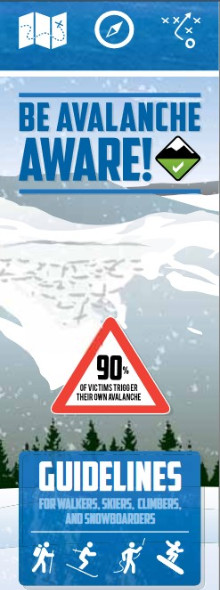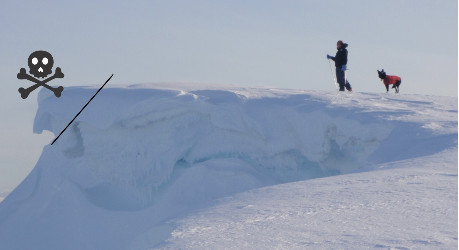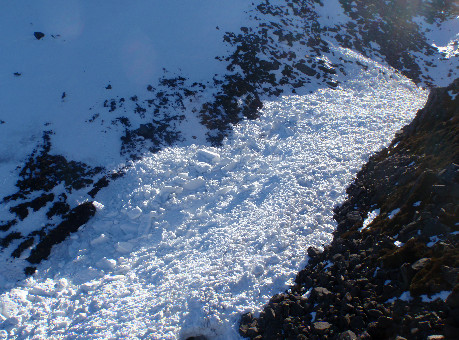
If you're climbing Scotland's hills and mountains in winter you need to know about avalanches. Every year people are injured or die as a result of avalanche, but many of these accidents would have been avoidable given greater awareness of the hazards and approrprate action to avoid them.
The first step is to realise that avalanches don't happen at random and that, by learning the factors that cause them - type and depth of snow, nature and angle of slope, temperature, presence of humans (!) etc - you can better avoid situations where an avalanche is likely.
Download the Be Avalanche Aware leaflet
There are experts in the science of avalanches whose advice you can draw on throughout the winter. The sportscotland Scottish Avalanche Information Service, publishes a daily forecast of avalanche, snow and climbing conditions for six areas of Scotland each winter. You can now get easy access to these reports, receive important alerts and measure slope angles on your phone with their new app.
This BMC/Association of Mountaineering Instructors video looks at how you can confirm and build on avalanche forecast information while you approach your route.
A free training resource is available to help hillwalkers, climbers, mountaineers and skiers understand and avoid avalanche dangers in the hills.
Aimed at individuals making critical decisions in the winter mountains, the free digital version of the ‘Be Avalanche Aware’ planning tool is clear and easy to follow, equipping people travelling in mountain terrain with practical information and advice to make them more aware of the avalanche risks and the factors that influence their own planning and journey decision making.
The online avalanche awareness training initiative has been created by The Snow and Avalanche Foundation of Scotland (SAFOS), with development support from member organisations Mountain Training Scotland and Glenmore Lodge.
It is rarely essential to negotiate an avalanche-prone slope. It is usually possible to find another way, or retreat. 90% of avalanches involving human subjects are triggered by their victims.
If it is essential to proceed, the following should be borne in mind:
Many avalanches are cornice-triggered. In general, climbing below cornices should be avoided:
When walking above cornices, take care to give them a wide berth. This photo of a cornice on Aonach Mor shows the possible fracture line.

Depending on conditions, the cornice could break off even further back than the line indicated
On most hills in Britain, avalanche hazard can be avoided completely by sensible choice of route.

A terrain trap is a topographical feature on the mountainside. Classically it can be a depression, concavity or flattening, such as a gully, corrie basin or abrupt change of slope angle which would allow avalanche debris to accumulate rather than flow away downhill.
Examples in the Scottish mountains would be Coire na Ciste on Ben Nevis, Coire na Tulaich on Buachaille Etive Mor, the Chalamain Gap and the moraines in Coire an't Sneachda in the Cairngorms and G&T Gully on Aonach Mor. Four of these locations have been the sites of multiple avalanche burial fatalities as a direct result of their being terrain traps.
Since shovelling takes such a long time, deep burials have a very low
chance of survival. Even a small avalanche off the side of a small
gully can have significant consequences if the debris has nowhere to
run to. Avalanche danger will rise and fall throughout the season as
the snow pack and weather conditions varies, but the topographical
structure of the mountainous terrain that you choose to travel through
remains constant.
The key to avoiding terrain traps is to make good route choices: